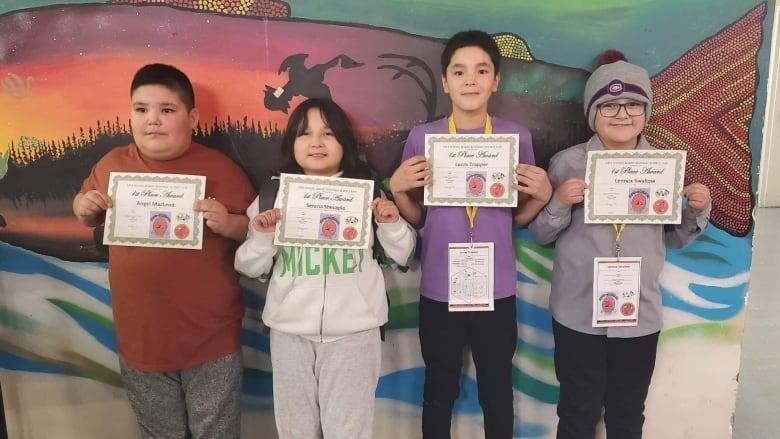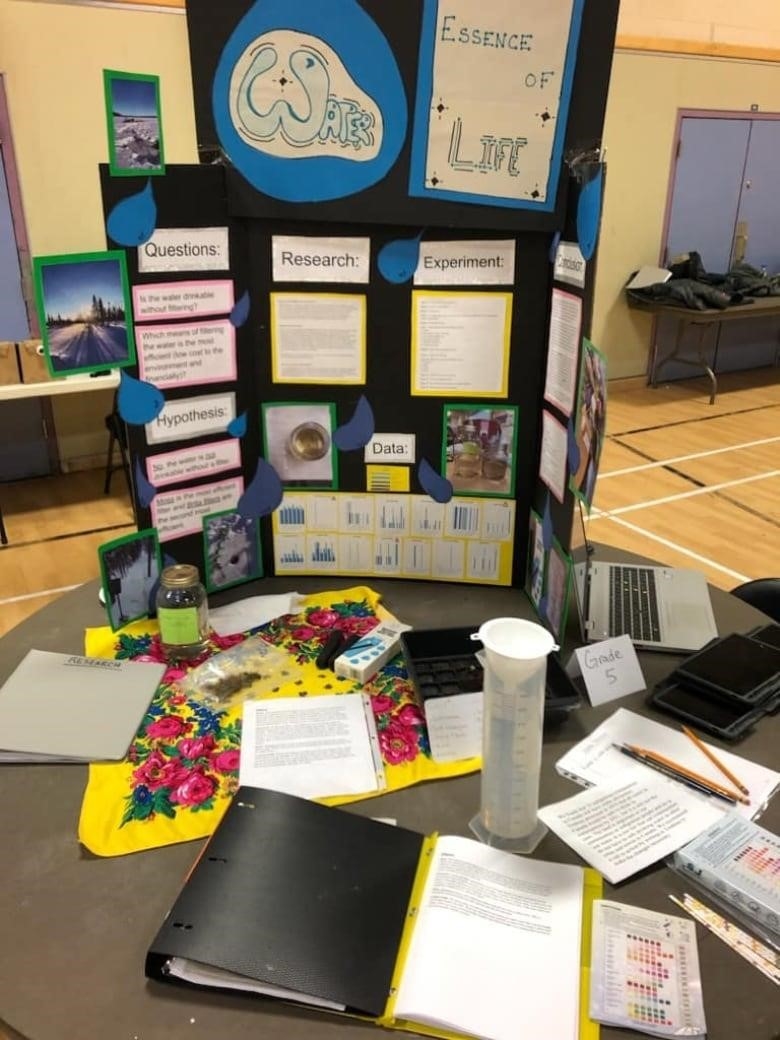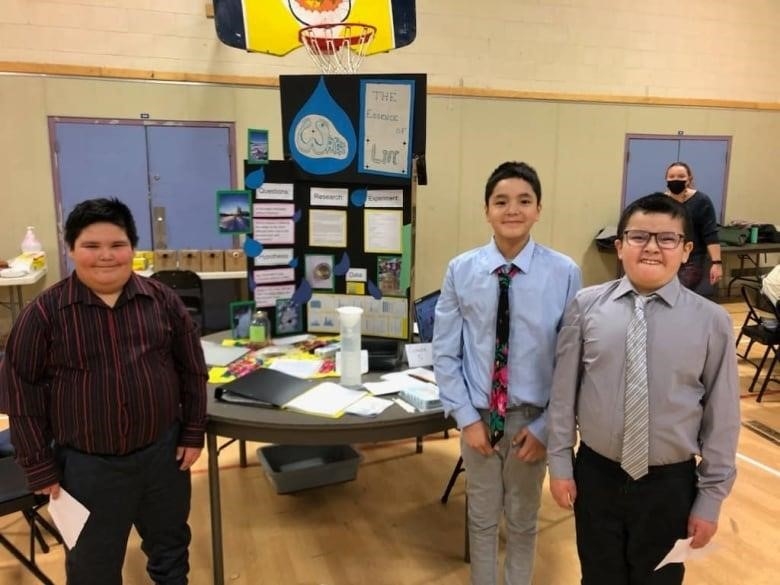
This week, students from Mistissini are competing at the provincial Indigenous science fair
A group of elementary school students in northern Quebec did a science project that brought attention to a possible problem with the water in their school.
It has also sent the students south so they can compete with their project, “Water: the essence of life,” at a provincial Indigenous science fair in Quebec City this week.
Four fifth-grade students at Mistissini Voyageur Elementary School tested the water quality at the source of the community’s water as well as in different parts of the school building, such as the washrooms, water fountains, and newer and older parts of the school.
“The goal was to see if there was a difference between the lake water straight from the source and after it goes through the pipes and into our schools,” said Dominique Roy, the Grade 5 homeroom teacher and one of two professors helping the students.
“They did find that we should filter the water in the schools,” she said, adding that the band office has agreed to do more tests.
Roy said that the water source, Mistissini Lake, is very, very good, but that the water quality gets worse as it goes through the school.
The students also learned about four different ways to filter water, such as using moss or a heavy piece of cotton, as well as more modern charcoal filters. In their evaluation, the students also looked at how much each method cost and how it affected the environment.

Lennox Swallow, Angel MacLeod, Lucas Trapper, and Serena Shecapio are the students on the team working on the project. Two of the four will be at the 2023 Quebec Indigenous Science Fair, which will be held at the Université Laval in Quebec City from March 21 to 23.
The event brings together Indigenous students from all over Quebec to work on science projects. The goal is to get Indigenous youth interested in science and engineering.
Serena Shecapio, who is 10 years old, thought it was “cool” and fun to be a part of the project. She said that she liked doing the science tests and is interested in what she is learning.
Shecapio, who is not one of the two teammates going to Quebec City, said, “It feels good.” Shecapio and the rest of the class in Mistissini will keep a close eye on the trip.
From her mom’s point of view, Serena really needed to push herself and get out of her comfort zone to work on the project.
Peggy Petawabano Shecapio said, “I thought it was really cool.” “Serena sort of pushed herself to finish the project. She did it, and I think her sense of herself also got a lot better.”
Great way to learn Frenc
Charlotte Rulac, the students’ French teacher, was the other teacher who helped them out. The students did their research in both English and French, which meant that they had to do a lot of translating. Some of the work was also done in Cree.
“I think teaching our kids a third language should be done through projects, because just learning the rules of French gets really boring,” said Rulac, adding that for most students, French is their third language after Cree and English.
She said that she can already tell that the students’ French is getting better and that they are making friends with other students who speak French.
Rulac said, “It’s not just a language; it’s a barrier that they’re breaking down, and they know it.”

Rulac and Roy both think it’s great when students use science as a way to show who they are.
Roy said, “We are just really happy for them because it’s a really cool experience outside of sports, where most kids move on to some kind of competition.”
“It’s so fun to see students get excited about their work and be motivated by it.”
Roy thought that the results of the tests with the different ways of filtering were also very interesting.
First, the students used moss to filter the water in the school. This was a traditional way for the Cree to clean water for thousands of years before Europeans arrived. The project also looked at how well a cotton cloth, which many Cree families use to filter water at their bush camps, works. The students also tried out two different kinds of charcoal filters that could be bought in stores.
Roy said that the tests showed that the commercial charcoal filters worked the best, but that they were very expensive and hurt the environment because they used charcoal and plastics.
“However, the moss did work to filter the water, and it’s free and old-fashioned,” said Roy. “That was really cool to see.”
